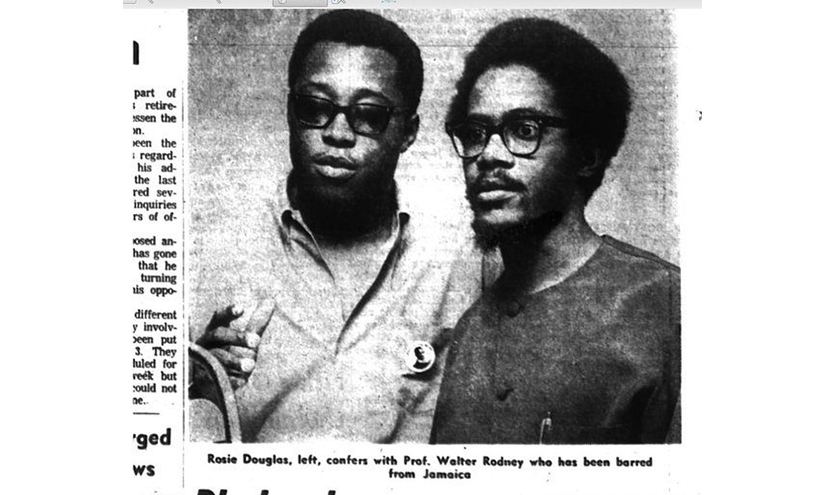
Using La Rose’s notes, we are able to reconstruct the passages that were read at James’ Ceremony of Return, selections which gloss several of the most famous moments in the Cahier. It is a moment that we would perhaps not know of, or not remember, had La Rose not scribbled his passage selections in the back cover of his copy of the Cahier. Neither biographical accounts nor the extensive photos of the funeral recall this moment. On the tarmac at Piarco, La Rose and the actor Errol Jones enshrined this moment of return by reading long passages from Aimé Césaire’s Cahier d’un retour au pays natal in English translation. This moment, in which James’ body arrives from London at Piarco Airport, the literal moment of arrival back into his country, seemed to James’ long-time friend and political comrade John La Rose to be the most symbolic. One photo shows James’ body being brought out by a file of O.W.T.U. Photographs of the event show the hearse in slow procession, the casket flocked with bromeliads and bird-of-paradise, and the umbrellas of the funeral attendees on their way to the graveyard. Among other details, biographers note that steel drum versions of the Rite of Spring and the International were played for the over one thousand people who attended. The funeral itself was divided between a “Ceremony of Return” held at the national airport, and a “Celebration of a Life” at the Trinidad Oilfield Worker’s Trade Union’s club, and included tributes by famous novelists and calypso singers. This paper explores the usefulness of these tropes derived from Bhabha’s work through a critical reading of C.L.R.After a long continental displacement and a minor governmental controversy, the body of Cyril Lionel Robert James-or Nello, as friends called him-was buried in Tunapuna Cemetery, Trinidad, on the afternoon of Monday, June 12th, 1989.

Bhabha’s argument that subaltern cultures may be understood as characterized by ironic mimicry and a “sly civility.” Although this model is seldom explicitly invoked in sports studies, it remains implicit in many interpretations of sport in the British Empire.

One theoretical approach has shaped a major strand of these post-colonial interpretations: Homi K. The emergence of post-colonial modes of analysis, related to this literary turn, has increased our awareness and interpretation of various representational techniques in and approaches to colonial cultures.

The literary turn in cultural and historical analysis has introduced a suite of new perspectives, theoretical approaches, and analytical techniques to the humanities and social sciences.


 0 kommentar(er)
0 kommentar(er)
